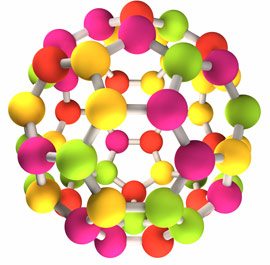Nanotechnology financiers and facilitators Advance Nanotech Inc (OTCBB) today reported “significant progress” in developing new organic semiconductors.
The Advance Nanotech research team, in collaboration with the Centre for Advanced Photonics and Electronics (CAPE) at the University of Cambridge, has developed novel composites made up of organic polymers and nanostructured materials that provide “printable” semiconductors for low-cost inkjet print manufacturing.
Peter Gammel, chief technology officer at Advance Nanotech said: “This simplification in the manufacturing of semiconductors will open up a world of new uses for electronics. We will be able to incorporate intelligent circuits into a variety of objects, from clothing to packaging. Dupont, PlasticLogic, Cambridge Display Technology and e-Ink are just a few of the companies who are participating in the printable electronics bandwagon”. [Xaar is another Silicon Fen company involved at the cutting edge of the ink jet printing technology]
Advance Nanotech is “very optimistic” about the demand for printed electronics. Market analysts IDTechEx estimate that printed electronics will grow to $30 billion in 2015 and reach $250 billion by 2025,
In the future, a full range of electronic and optoelectronic components could be printed – from transistor circuits to photovoltaic films, from RF ID tags to OLEDs and displays, from logic and memory components to wireless interfaces and RF shields.
Electronic and optoelectronic fabrication plants will resemble printing presses and enormous markets could be created where conventional silicon chips cannot go today because they are too costly and rigid. Enabling this revolution will require polymer materials that can be inkjet printed and also have carrier mobility and current transport characteristics that make them suitable for electronic device applications.
“A one nanometer gap between the molecules of an organic polymer is sufficient to prevent effective charge transport. Today even the best polymer materials exhibit a conductivity that is two to three orders of magnitude lower than silicon,” says Dr. Paul Beecher (pictured), a CAPE researcher working on the project.
Nanotechnology
“Our technology explores an alternative approach to overcoming the poor electrical properties of most organic semiconductors by exploiting the enhanced conductivity brought about by selected nanomaterials. Our most recent results suggest the potential of our technique for addressing this crucial market need.”
In more than a year of intense R&D effort, the AVNA/CAPE team has optimized the chemical treatment of nanostructured materials and successfully dispersed them in a range of polymers. Selected nanomaterials have been incorporated in organic polymers, thus turning insulating materials into composites that show promising transistor characteristics. CAPE says these composites are quite stable, with no tendency to quickly form aggregates in solution, and are therefore suitable for inkjet print manufacturing.
The investment in a new conductive polymer technology was made in partnership with CAPE, a research facility within the Electrical Division within the University’s Department of Engineering.
Advance Nanotech said it is currently funding 26 portfolio companies in the electronics, biopharma and materials industries.

